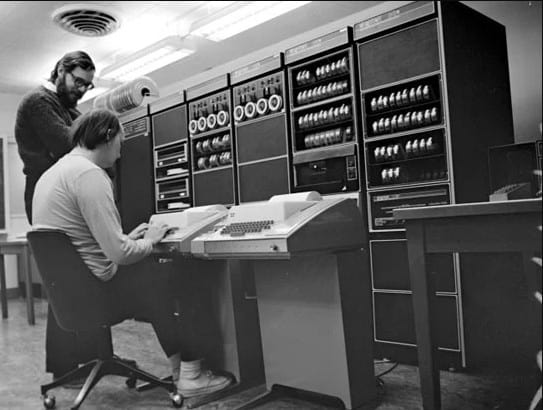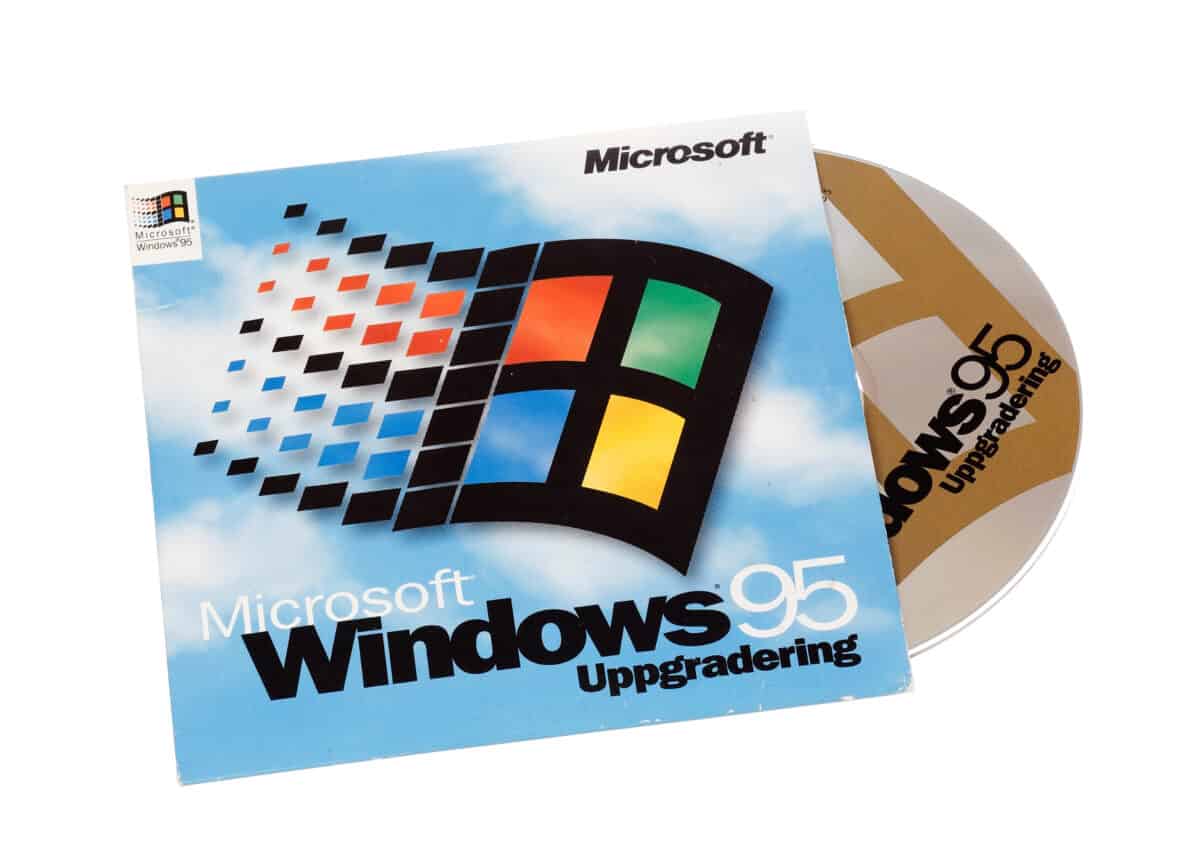5 Facts About The Unix Operating System
- The Unix Operating System is the oldest operating system that has ever existed.
- Unix can run multiple application programs simultaneously.
- Unix was firstly written in the low-level PDP-7 assembler language before it was rewritten in 1972 with the new C programming language.
- Unix isn’t an operating system name; instead, it is a family of different operating systems.
- Unix is not open source.

What Is Unix: Explained
Unix operating system is a multitasking, multiuser operating system developed in the late 1960s. AT&T Bell Labs is the developer of the Unix Operating System. Originally designed for exclusive use by programmers due to its flexibility, power, and portability, Unix became widely used in various computing systems, including desktops, servers, and laptops.
This has also made it the operating system that has been ported to more machine families the most, resulting in its identification with the open systems concept. Unix coordinates how computer resources are used, establishing some sort of “labor division.” For example, while one person runs a spell check program, another can create a document, while another person edits the document, another person formats the document, etc., at the same time without the need for each person to know what the other person is doing.
This is achievable because Unix controls all computer commands, right from the keyboards to the generated data, etc., therefore causing each user to believe they are the only one working on the computer at that moment. This ability is called real-time sharing and has arguably made Unix the most powerful operating system ever.
Unix was initially designed for medium-sized computers, but it has been used in more powerful and larger mainframe computers and even personal computers since its creation. The major features of the Unix operating system are its portability, flexibility, multitasking, and multiuser capabilities. It also features a hierarchical file system and an extensive software library.
How to Use The Unix Operating System
To start using Unix, you must set up a Unix account via your system administrator. Your Unix account is simply your office: it’s more like your download “place’ in the Unix network/environment. As explained earlier, due to the multiuser nature of this operating system, other registered users can also be at work on the same system simultaneously with you.
Sometimes, it may be an entire network of Unix computers. Therefore, apart from knowing your account name, to use the Unix operating system, you should also know the name (hostname) of the computer having your account.
You, and other users, will communicate with the computer from a window or terminal. To log into the Unix environment (in essence, your created Unix account), you must connect to the Unix computer. A terminal may have been connected to the computer already; in that case, you do not need to connect again.
After connecting to the Unix computer, log in to your Unix account to start a session. Two things happen when you log in: first, it identifies the users currently in a session; secondly, it tells the computer that you can start working.
After using the Unix environment, you should log out; sometimes, you may necessarily need to disconnect from the Unix computer.
The Difference Between Unix and Linux
Technically, Linux is a cloned version of Unix. And this serves as the basis of their differences. Nonetheless, this section comprehensively outlines the significant differences between Unix and Linux:
First, while Unix source code isn’t freely available to the general public, Linux users can freely access and download its source code whenever. In essence, Linux is open source while Unix is closed source. Besides, Linux is a graphical user interface plus a command-line interface, whereas Unix only features a command-line interface.
The Linux operating system also supports more file systems than Unix. For instance, while Linux supports xfs, vfat, ext3, ramfs, ext4, ufs, ntfs, etc., file systems, Unix only supports zfs, js, gps, hfx, vxfs, and xfs file systems.
Of course, Unix operating system is portable, which serves as one of its major advantages. However, Linux seems to be more portables, somewhat earning it an edge in this regard.
Unix Operating System Release History
At the end of the 1960s, the young engineer at AT&T Bell Labs, Kenneth Thompson, worked on the Multiplexing Information and Computer Services (Multics) operating system. Multics was an experimental operating system for GE-645 mainframe, developed in the 1960s by the Massachusetts Institute of Technology, Bell Labs, and General Electric.

Ken Thompson and Dennis Ritchie, working on PDP-11 and UNIX in 1972
©Peter Hamer, CC BY-SA 2.0, via Wikimedia Commons – Original / License
Although Multics introduced many innovations, it had many problems. At the end of the 1960s, Bell Labs, frustrated by the slow progress and difficulties, pulled out of the project. Thus, with the help of his colleagues Dennis Ritchie, Douglas McIlroy, and Joe Ossanna, Thompson decided to experiment with some Multics concepts and redo it on a much smaller scale. Thus in 1969, the idea of the now-ubiquitous Unix was born.
While Ken Thompson still had access to the Multics environment, he wrote simulations for the new file and paging system on it. Later the group continued his work on blackboards and scribbled notes.
In 1969, Thompson developed a beautiful game, Space Travel, first written on Multics, then transliterated into Fortran for GECOS, and finally for a little-used PDP-7 at Bell Labs. He later decided to use the same PDP-7 for the implementation of the first UNIX. On this PDP-7 and using its assembly language, the team of researchers, initially without financial support from Bell Labs, led by Thompson and Ritchie, developed a hierarchical file system, the concepts of computer processes and device files, a command-line interpreter, and some small utility programs.

Microsoft Windows 95 operating system cover with CD for the Swedish version.
©iStock.com/t:Fotonen
The name UNICS was coined in 1970 by the team member Brian Kernighan, who played on Multics name. UNICS, Uniplexed Information, and Computing System could eventually support multiple simultaneous users and was later shortened to Unix.
In 1970 Thompson and Ritchie wanted to use Unix on a much larger machine than the PDP-7 and traded the promise of adding text processing capabilities to Unix to some financial support from Bell, porting the code for a PDP-11/20 machine. Thus, for the first time in 1970, the Unix operating system was officially named and ran on the PDP-11/20. It added a text formatting program called roff and a text editor. All three were written in PDP-11/20 assembly language. Bell Labs used this initial “text processing system,” made up of Unix, roff, and the editor, for text processing of patent applications. Roff soon evolved into troff, the first electronic publishing program with a full typesetting capability.
In 1972, Unix was rewritten in the C programming language, contrary to the general notion at the time “that something as complex as an operating system, which must deal with time-critical events, had to be written exclusively in assembly language.”
The migration from assembly language to the higher-level language C resulted in much more portable software, requiring only a relatively small amount of machine-dependent code to be replaced when porting Unix to other computing platforms.
AT&T made Unix available to universities and commercial firms, and the United States government under license. The license included all source code, including the machine-dependent parts of the kernel, which were written in the PDP-11 assembly code. Copies of the annotated Unix kernel sources circulated widely in the late 1970s as a much-copied book, which led to considerable use of Unix as an educational example. At some point, ARPA, Advanced Research Projects Agency, adopted Unix as a standard language for the Arpanet community.
During the late 1970s and early 1980s, the influence of Unix in academic circles led to the large-scale adoption of Unix by many commercial startups. For example, Solaris, HP-UX, and AIX. Today, besides certified Unix systems such as those already mentioned, Unix-like operating systems such as Linux and BSD descendants (FreeBSD, NetBSD, and OpenBSD) are commonly encountered.